50 Years of NIOSH and 30 Years of NIOSH in Alaska
Posted on by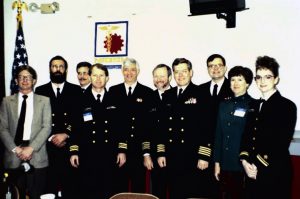
For the past 30 years, NIOSH has operated a small research office in Anchorage, Alaska. The NIOSH Division of Safety Research established the Alaska Field Station in 1991 to address the high rate of occupational fatalities among workers in the state. Surveillance from 1980-1989 showed Alaska had the highest rate of occupational fatality in the nation, seven times higher than the rate for all U.S. workers. Initially this high rate was attributed to the harsh environment and remote workplaces, however when Alaska was compared to other Nordic nations operating with similar industries in similar conditions, the rate remained much higher than in areas of Scandinavia.
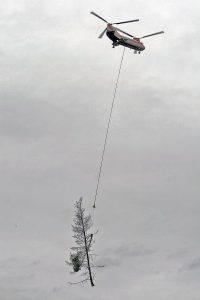
The first decade of work in Alaska saw great strides in establishing a statewide surveillance network for fatal injuries in the form of the Alaska Occupational Injury Surveillance System. Analysis of data from these early years identified three main industries contributing to the majority of workplace fatalities in Alaska: commercial fishing, small aircraft aviation, and helicopter logging. These industries would be the foundational programs at the Alaska Field Station in its first decade.
To address these issues, researchers at the Alaska Field Station established the Interagency Working Group for the Prevention of Work-Related Fatalities with state and federal partners. This working group directed interventions in several industries, but the biggest successes were in helicopter logging and commercial fishing. After an 18-month period between 1992 and 1993, when six crashes associated with helicopter logging operations in Alaska resulted in 9 fatalities and 10 severe non-fatal injuries, the working group held an emergency meeting. Consensus safety recommendations were developed and immediate improvements in the oversight of this industry were implemented, resulting in only one additional crash, with one fatality, from helicopter logging in Alaska through year-end 1999. Overall, the state saw a 49% decrease in all workplace fatalities and a 67% decrease in commercial fishing fatalities from 1990-1999.
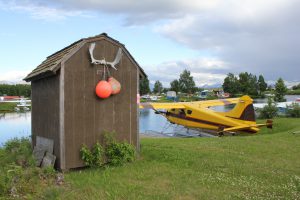
The second decade of NIOSH work in Alaska focused on improving aviation safety for air taxi and air commuter operations and expanding the work of the commercial fishing safety program on a national level. The aviation industry accounted for the second highest number of workplace deaths in Alaska for 1990-1999 with an average of 10 fatalities per year. In response, the researchers in Alaska formed the Alaska Interagency Aviation Safety Initiative with the Federal Aviation Administration, National Transportation Safety Board, and industry associations such as the Alaska Air Carriers Association. The focus was on reducing the number of air taxi and commuter fatalities in the state through safety interventions that included projects such as adding weather cameras at critical mountain passes for pilots to check before flight, implementing the Capstone Project which added advanced navigational equipment to aircraft, and encouraging improved safety standards for the industry through programs like the Medallion Foundation and Circle of Safety. These partnerships and safety programs resulted in a 50% reduction of aviation fatalities from 2000-2009 from an average of 10 fatalities per year to an average of 5 fatalities per year.
During this same time period, the Commercial Fishing Safety Research and Design Program was expanded to identify and address fishing industry issues beyond Alaska. The program developed the Commercial Fishing Incident Database (CFID) and added an engineering safety program to compliment the epidemiological surveillance. CFID is a nationwide database of fatalities and vessel disasters in the commercial fishing industry. A memorandum of understanding with the U.S. Coast Guard (USCG) gives NIOSH access to their incident reports and investigations. The use of this detailed surveillance data has been critical in identifying priority hazards specific to fleets and regions across the U.S. and created targeted interventions (policy recommendations, administrative controls, engineering solutions) to address the hazards.
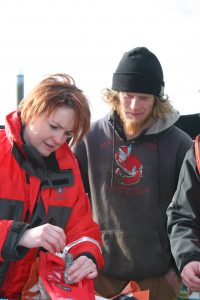
While expanding the program to other states with commercial fishing, research and prevention efforts continued in Alaska. The greatest success of the program in this time period was helping address the high number of fatalities in the Bering Sea Aleutian Island crab fleet, known from a famous reality TV show as the “deadliest catch”. From 1990-1999, the fleet lost an average of 8 fishermen each season, usually from the sinking of an entire vessel that capsized from being overloaded. In 1999 the USCG used NIOSH data to develop the “At the Dock Stability and Safety Compliance Check” program. For this program, Coast Guard staff reviewed vessel loading and stability instructions with the master of each vessel and checked for overloading. Vessels without stability reports, overloaded, or having missing, outdated, or inoperable primary lifesaving equipment (i.e. immersion suits, life rafts, EPIRBs) were not allowed to leave the dock until the safety deficiency was corrected. In the decade after the implementation of the program, the fatality average dropped from 8 per year to less than 1 per year.
The third decade of work at the Alaska office has been a time of reorganization and renewal. In 2015, the Alaska office celebrated its 25th anniversary with a look back at its two decades of progress and events with local, state, and federal partners honoring the work that contributed to reduced occupational fatality rates in the state over that time.
Also in 2015, the NIOSH Alaska Pacific Office, as it had been known since 2005, became part of the new NIOSH Western States Division where it was administratively aligned with the Division headquarters at the NIOSH Spokane Research Laboratory and the former NIOSH Western States Office located in Denver, Colorado. Together these three locations address occupational safety and health issues encompassing a broad range of working environments with a variety of workplace safety and health issues, including an emphasis on western states with consistently elevated worker fatality rates. In addition to aviation and commercial fishing work, the Division also supports programs in the oil and gas extraction industry, wildland firefighting, the cannabis industry, and is home to the NIOSH American Indian/Alaska Native Initiative.
In 2016, the Commercial Fishing Safety Research and Design Program became part of the newly formed NIOSH Center for Maritime Safety and Health Studies. This new virtual center expanded NIOSH’s research beyond commercial fishing by addressing workplace safety and health issues in other maritime industries including marine transportations, marine terminals, shipyards, seafood processing, aquaculture, and commercial diving.
The inclusion of the Alaska office in the Western States Division also allowed new focus on the Alaska office’s original mission to address occupational fatalities and injuries among workers in Alaska. Through renewed partnerships the researchers in the Alaska office have been conducting analyses of non-fatal injuries among workers across the state with a focus on groups such as migrant seafood processors, young workers, fishermen, aviation workers, and others.
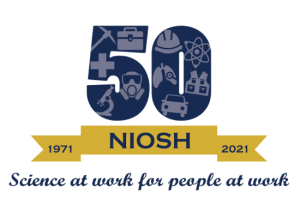 As NIOSH celebrates its 50th anniversary with a commitment to improving the safety and health of all workers across the country, the NIOSH Alaska office celebrates its 30th anniversary with the same commitment to the residents of the 49th state from the North Slope to the Inside Passage, from the Brooks Range to the Aleutian Chain.
As NIOSH celebrates its 50th anniversary with a commitment to improving the safety and health of all workers across the country, the NIOSH Alaska office celebrates its 30th anniversary with the same commitment to the residents of the 49th state from the North Slope to the Inside Passage, from the Brooks Range to the Aleutian Chain.
Theodore D. Teske, MA, Health Communication Specialist, NIOSH Western States Division.
Ryan Hill, MPH, CAPT, U.S. Public Health Service, Director, NIOSH Western States Division, Manager, NIOSH Oil and Gas Extraction Program.
Mary O’Connor, MS, CAPT, U.S. Public Health Service, Occupational Safety and Health Specialist, NIOSH Western States Division.
Devin Lucas, PhD, Epidemiologist, NIOSH Western States Division.
This blog is part of a series for the NIOSH 50th Anniversary. Stay up to date on how we’re celebrating NIOSH’s 50th Anniversary on our website.
Posted on by

